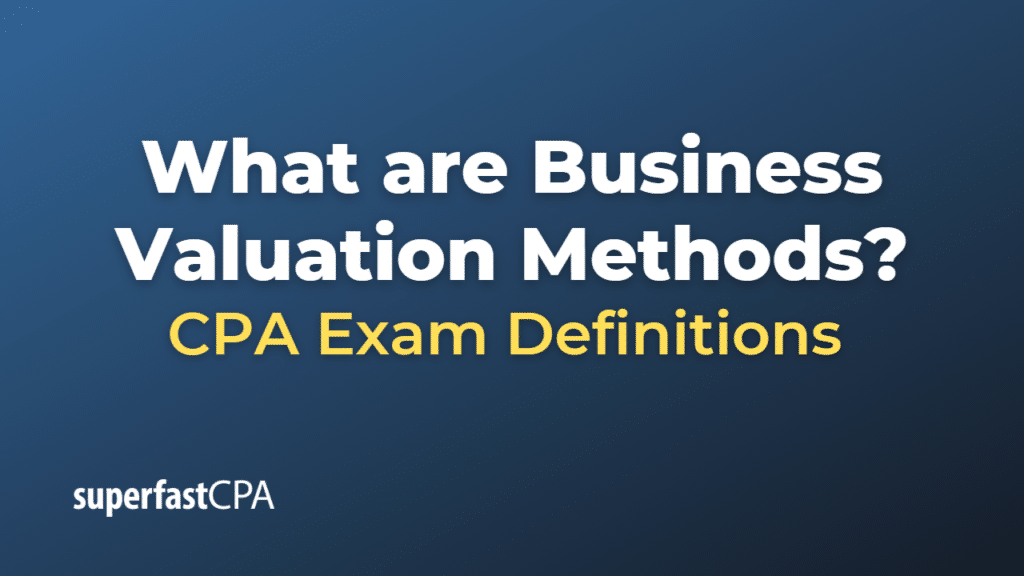Business Valuation Methods
There are several business valuation methods used to estimate the economic value of a business or a company’s ownership interest. These methods generally fall into three main categories: asset-based, income-based, and market-based approaches. Here’s a brief overview of some popular business valuation methods:
- Asset-based approach: a. Adjusted net asset method: Calculates the difference between the fair market value of a company’s total assets and its total liabilities. b. Liquidation value: Estimates the value of a company if all its assets were to be sold and its liabilities paid off.
- Income-based approach: a. Discounted cash flow (DCF) method: Projects the company’s future cash flows and discounts them back to the present value using an appropriate discount rate. b. Capitalization of earnings method: Determines the company’s value based on its normalized earnings divided by a capitalization rate.
- Market-based approach: a. Price-to-earnings (P/E) ratio method: Multiplies the company’s earnings by the average P/E ratio of similar businesses in the industry. b. Comparable transactions method: Compares the company’s valuation multiples (e.g., revenue, EBITDA, net income) to those of other businesses in similar transactions.
Each method has its strengths and weaknesses, and the appropriate method to use may depend on the specific circumstances of the business being valued. In many cases, multiple valuation methods may be employed to arrive at a more accurate and comprehensive assessment of a company’s value.
Example of Business Valuation Methods
Let’s consider an example using the discounted cash flow (DCF) method, an income-based approach to business valuation. Suppose we want to value a small tech company. Here’s a simplified step-by-step process:
- Project future cash flows: We’ll estimate the company’s future free cash flows for the next five years. Let’s assume the following cash flow projections (in thousands):
- Year 1: $100
- Year 2: $120
- Year 3: $150
- Year 4: $180
- Year 5: $200
- Determine the discount rate: The discount rate represents the required rate of return, considering the time value of money and the risk associated with the investment. Let’s assume a discount rate of 10% for this example.
- Calculate the present value of cash flows: Using the discount rate, we’ll find the present value of each year’s cash flow:
- Year 1: $100 / (1 + 0.10)^1 = $90.91
- Year 2: $120 / (1 + 0.10)^2 = $99.17
- Year 3: $150 / (1 + 0.10)^3 = $112.70
- Year 4: $180 / (1 + 0.10)^4 = $122.76
- Year 5: $200 / (1 + 0.10)^5 = $124.69
- Calculate the terminal value: After the five-year period, we’ll assume the company’s cash flows will grow at a constant rate of 2% per year. We’ll use the Gordon growth model to calculate the terminal value:
Terminal value = (Year 5 cash flow × (1 + growth rate)) / (discount rate – growth rate)
Terminal value = ($200 × 1.02) / (0.10 – 0.02) = $2550 - Calculate the present value of the terminal value:
PV of terminal value = $2550 / (1 + 0.10)^5 = $1580.69 - Sum the present values of cash flows and the terminal value to find the company’s estimated value:
Estimated value = $90.91 + $99.17 + $112.70 + $122.76 + $124.69 + $1580.69 = $2131.92 (in thousands)
According to the DCF method, the estimated value of the small tech company is approximately $2,131,920.













